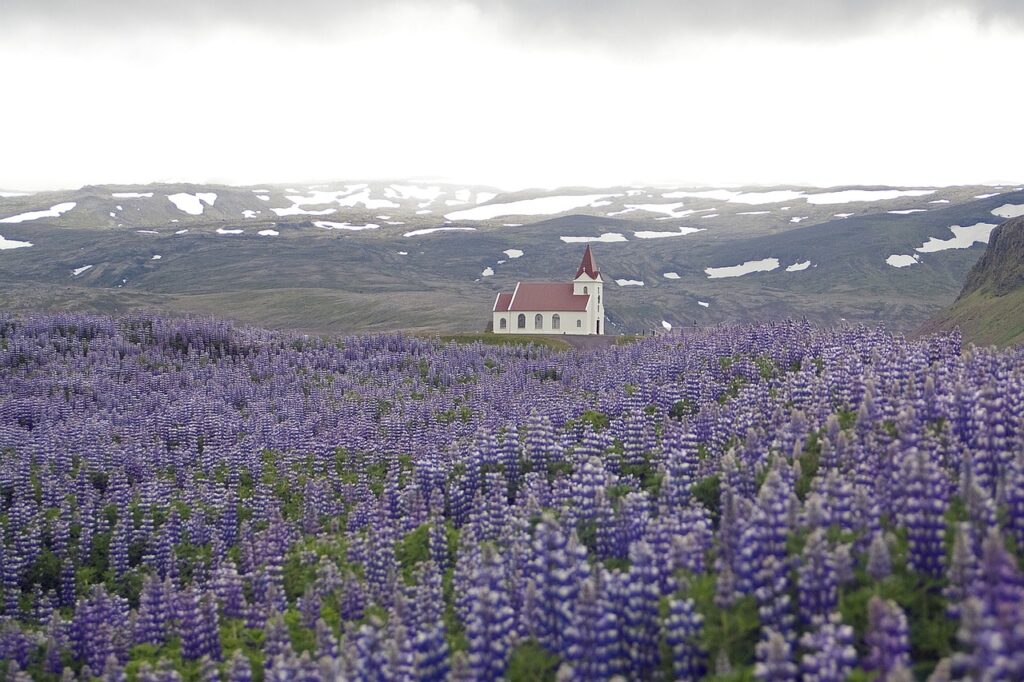You’ve probably heard that we need to combat the spread of alien species, but is this a problem we should be concerned about?
For those of us living around the Oslo Fjord (Norway), have experienced the Pacific oyster. Where we used to be able to walk barefoot on the beaches just a few years ago, it is now densely populated with razor-sharp Pacific oysters. Without natural predators, it has spread rapidly.
The plants that largely affect, reduce, and threaten biodiversity and ecosystems are called invasive alien plants. These plants are often introduced to new ecosystems by human activities, and this has become a significant ecological concern globally. It could be, for example, someone bringing a plant home from vacation, or seeds hitching a ride on a truck from Europe and falling off elsewhere. These species that do not naturally belong here can outcompete and displace native vegetation, leading to a range of negative effects on biodiversity, ecosystem functions, and even human activities. The importance of combating invasive plants lies in preserving the delicate balance in ecosystems, maintaining biodiversity, and ensuring the services these ecosystems provide. All plants have a role in nature, and it can have significant consequences if species are wiped out in this way.
When “invasive plants eradicate local” plants, biodiversity is reduced. Biodiversity in nature is important. Humans on Earth depend on sustainable biodiversity to survive on the planet.
The most common alien plants in Europe are Japanese Knotweed, Giant Hogweed, Canadian goldenrod, and Himalayan Balsam, but there are 41 different species on the EU’s list of invasive alien plants that are prohibited from importing or spreading. The list is constantly growing. Norway, which may be the furthest along in this work globally, currently has 107 plants on the list of invasive alien plants posing a very high risk.
If these species are allowed to spread freely, they will quickly take over vast areas, and many of today’s species will be wiped out. See how Japanese knotweed has spread in Europe in recent years here.

To meet the challenge of invasive plants, various control and management methods are used. This includes mechanical methods such as cutting and pulling, chemical methods such as the use of pesticides, and biological control by using natural enemies of the invasive species. Often, combating invasive alien plants leads to large amounts of soil being deposited as soil masses contain or may contain seeds or plant parts from the plant. It is paradoxical that in such cases, one must deposit an important resource and part of nature to protect biodiversity in nature. This can be avoided by heating the soil masses to a temperature that the species cannot tolerate for a certain period. SoilSteam, along with research partners like Nibio and others, has found these critical temperatures and developed machines that make it possible to combat these species. At the same time, the soil masses can be reused.
References: Simberloff, D., Martin, J. L., Genovesi, P., Maris, V., Wardle, D. A., Aronson, J., … & McGeoch, M. A. (2013). Impacts of biological invasions: what’s what and the way forward. Trends in Ecology & Evolution, 28(1), 58-66. Vilà, M., Espinar, J. L., Hejda, M., Hulme, P. E., Jarošík, V., Maron, J. L., … & Pyšek, P. (2011). Ecological impacts of invasive alien plants: a meta-analysis of their effects on species, communities, and ecosystems. Ecology Letters, 14(7), 702-708. Mack, R. N., Simberloff, D., Lonsdale, W. M., Evans, H., Clout, M., & Bazzaz, F. A. (2000). Biotic invasions: causes, epidemiology, global consequences, and control. Ecological Applications, 10(3), 689-710.